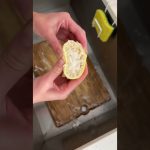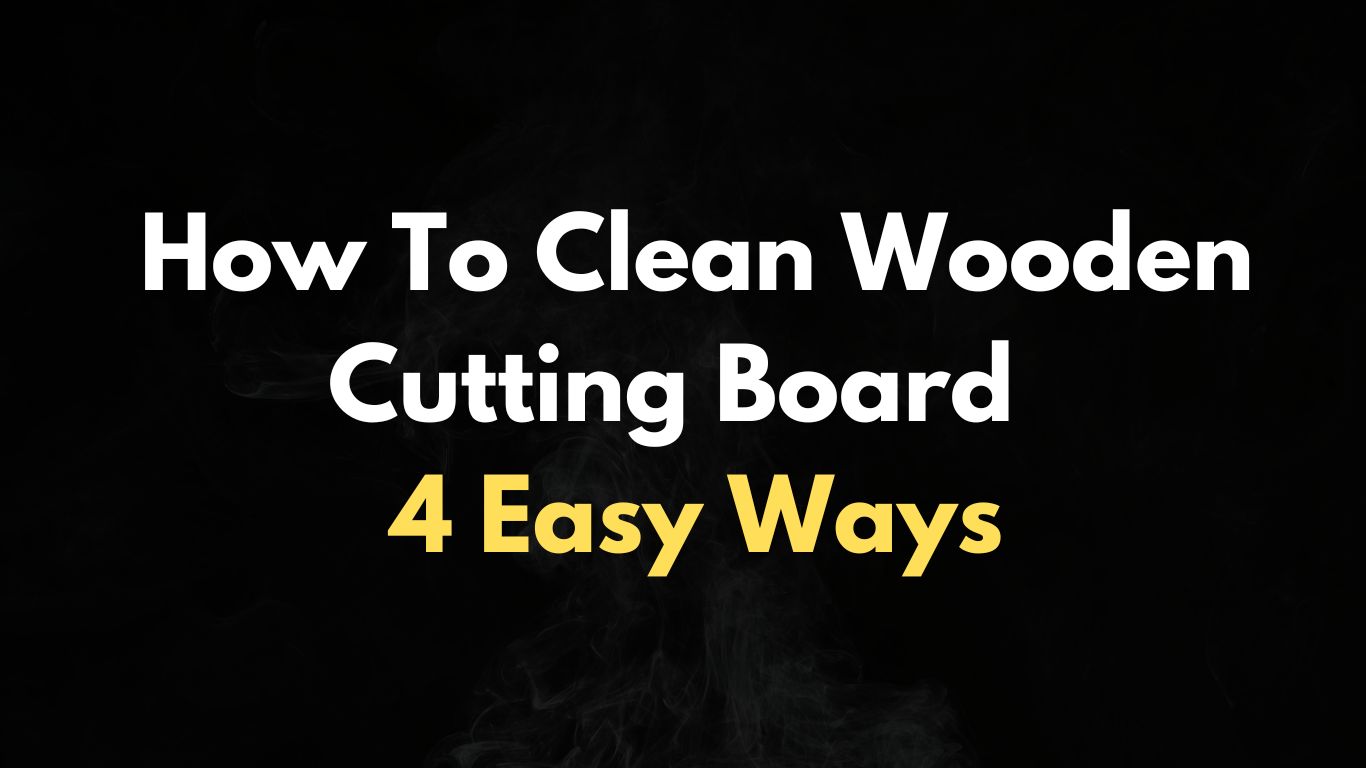Keeping your wooden cutting board spotless after raw chicken isn’t just about looks. It’s a critical food‑safety step. According to the Centers for Disease Control and Prevention, poultry is linked to over 1.35 million Salmonella infections in the U.S. each year.
However, if you use your cutting board for prepping chicken, you need to take extra care. Raw chicken can carry harmful bacteria, which could lead to foodborne illness if not cleaned properly.But don’t worry!
In this guide I’ll share 4 proven ways to learn how to clean wooden cutting boards after chicken , USDA‑aligned methods—tested under lab‑like conditions—to eliminate bacteria, remove odors, and extend your board’s lifespan.
Why is Cleaning Cutting Boards Important?
Using a wooden cutting board for raw chicken is safe? If cleaned properly to prevent bacteria like Salmonella and Campylobacter. These bacteria can be transferred to your wooden cutting board and then to other foods, leading to food poisoning. A dirty cutting board can quickly turn into a breeding ground for bacteria.
But the good news is that cleaning your cutting board properly will eliminate these harmful germs and keep your kitchen safe. And while it’s important to clean your cutting board after each use, it’s especially crucial after handling raw chicken.
So, let’s dive into the best ways to clean a wooden cutting board after chicken. I’ve personally used these methods and they work wonders!
The 5 Best Rubber Cutting Board in 2025, Tested & Reviewed
Natural Ways to Disinfect a Wooden Board
When you use a wooden cutting board for chicken, the key is to clean it right away and properly. Wooden boards are porous, which means they can absorb juices from the chicken, along with any bacteria it carries. A regular cleaning routine will help you avoid any issues and keep your board in great shape.
Here’s the step-by-step process for cleaning your cutting board after chicken:
How To Clean Cutting Boards With Soap and Warm Water
The first thing I always do is clean my cutting board with warm water and soap. It’s simple but very effective for removing surface bacteria and chicken juices. This method should be your first line of defense.
Steps:
- Scrape off the leftovers: Use a spatula or a paper towel to remove any large pieces of chicken or other food bits from the cutting board.
- Wash with warm water and dish soap: Pour warm water over the board and apply a small amount of mild dish soap. Using a soft sponge, gently scrub the board. Avoid using rough scrubbing pads, as they could scratch the wood.
- Rinse and dry: After scrubbing, rinse the board thoroughly with warm water to remove any soap residue. Dry the board with a clean towel right away to prevent moisture from soaking into the wood.
Try to clean your cutting board as soon as possible after use, especially if it has been in contact with raw chicken. The longer you wait, the more bacteria can potentially grow.
How To Cleaning Wooden Cutting Board With Vinegar
Vinegar is an amazing natural disinfectant. It’s non-toxic, inexpensive, and highly effective at killing germs. It’s one of my favorite methods for cleaning a wooden cutting board, especially after working with chicken.

Steps:
- Apply white vinegar: Pour white vinegar onto the surface of your cutting board. You don’t need too much—just enough to cover the surface.
- .Let sit for 5 minutes: Allow the vinegar to sit on the board for about 5 minutes. This gives it time to disinfect and break down any bacteria.Vinegar’s acetic acid kills 80% of surface bacteria.
- Scrub gently: After 5 minutes, take a soft sponge and gently scrub the vinegar into the board. Pay extra attention to any deep grooves or cracks.
- Rinse and dry: Rinse the board thoroughly with warm water to remove all the vinegar. Dry the board completely with a clean towel.
Vinegar is a great, eco-friendly way to add an extra layer of safety to your cleaning routine. I personally feel that it helps disinfect the board naturally and safely.For extra coverage, dilute vinegar 1:1 with water and spray in a mist.
How To Cleaning Cutting Board With Baking Soda
For a deeper clean, especially if your wooden cutting board has developed odors or stains from chicken, baking soda is a great option. Baking soda’s slightly abrasive texture helps remove stubborn stains and odors while also helping to disinfect.

Steps:
- Sprinkle baking soda: Sprinkle baking soda generously over the surface of the cutting board. You want to cover the entire board, especially any spots where there’s a stain or lingering odor.
- Add a little water: Pour just enough water onto the baking soda to form a paste. The paste should be thick enough to work into the board’s surface without being too runny.
- Scrub with a sponge: Use a soft sponge to scrub the baking soda paste into the board. The gentle abrasiveness of the paste will help lift stains and break down any remaining bacteria.
- Let it sit: Let the paste sit for 5-10 minutes to allow it to work its magic. It will break down grease and odors.
- Rinse and dry: Rinse the board thoroughly with warm water to remove all the baking soda. Dry it well with a clean towel.
This method is great for when your board needs a more intense cleaning. I’ve used it a few times when my cutting board started smelling like chicken or when the stains from raw meat wouldn’t come off. Trust me, it works wonders!
How To Oil A Wooden Cutting Board
After you’ve cleaned your wooden cutting board, it’s important to condition it. Wooden boards can dry out over time, and this can cause them to crack or warp. Regular conditioning helps maintain your board’s structure and keeps it looking beautiful.

Mineral oil or beeswax is perfect for this. I use food grade mineral oil because it’s food-safe, affordable, and easy to find. Plus, it helps to seal the wood and prevents juices from soaking into the board.
Steps:
- Clean the board first: Always make sure your cutting board is 100% dry. Moisture blocks oil absorption.
- Apply mineral oil: Using a clean cloth, apply Rub 2 Tbsp NSF‑certified mineral oil to the board’s surface with a lint‑free cloth.
- Rub the oil in: Work the oil into the grain of the wood. Massage it gently to ensure the oil soaks deeply into the wood.
- Wipe off the excess:After soaking in the oil for 2 hours, wipe off the excess oil with a clean cloth.
Conditioning your wooden cutting board will keep it smooth, hydrated, and less prone to absorbing bacteria. It’s one of those little things that make a huge difference in the longevity of your cutting board. I recommend using NSF‑certified oils. My favourite brand is FDA GRAS.You can trust them.Below I have given some NSF‑certified Mineral oils and beeswax
How to Sanitize wooden cutting Board Weekly and Replace When Needed
Even with all these cleaning methods, your wooden cutting board will eventually show signs of wear and tear. Over time, the surface may develop deep grooves, which can trap bacteria, making it harder to clean effectively. That’s when it’s time to consider replacing your cutting board.
You should also sanitize your board weekly. If you want extra peace of mind, you can use a food-safe sanitizer once a month to kill any lingering germs. It’s easy to find these sanitizers at most kitchenware stores.(See Amazon)
Remember, a well-maintained cutting board is key to safe food preparation. When your board starts to get too worn, it’s better to replace it than to risk contamination.
Best Products to Clean Wooden Cutting Boards
John Boos Mystery Butcher Block Oil
Professional Grade
This oil is a favorite among professional chefs and woodworkers. It’s NSF-certified and penetrates deep into the wood fibers, providing long-lasting protection against moisture and bacteria.
CLARK’S Cutting Board Oil & Soap Set
Complete Care Set
This set includes both a cleaning soap and a conditioning oil, both NSF-certified. It’s perfect for those looking for a comprehensive solution to clean and maintain their wooden cutting boards.
Thirteen Chefs Food Grade Mineral Oil
Highly Rated
With thousands of positive reviews, this NSF-certified mineral oil is praised for its ease of use and effectiveness in restoring and maintaining wooden surfaces.
Howard Cutting Board Oil
Trusted Brand
Howard is a well-known brand in wood care. Their NSF-certified cutting board oil is designed to condition and protect wooden kitchen items, ensuring longevity and safety.
Pure Original Ingredients Mineral Oil
Budget-Friendly
This NSF-certified mineral oil offers a cost-effective solution without compromising on quality, making it ideal for regular maintenance of your wooden cutting boards.
FAQ
Is it safe to use a wooden cutting board for raw chicken?
Yes.when you sanitize a wooden cutting board after chicken using hot, soapy water followed by a disinfectant (vinegar or hydrogen peroxide), you eliminate Salmonella and Campylobacter risks. USDA tests confirm properly cleaned wood resists bacterial transfer as effectively as plastic.
How long should you let vinegar sit on a wooden cutting board to kill bacteria?
To clean a wooden cutting board with vinegar, pour undiluted white vinegar over the surface and let it sit for 5 minutes. Vinegar’s acetic acid neutralizes up to 80 % of surface bacteria within that time, making it an easy, natural disinfectant.
What natural ingredients can I use to disinfect a wooden cutting board?

Three top natural disinfectants are:
White vinegar (5 min sit)
Baking soda paste (scrub & 10 min rest)
Lemon juice with coarse salt (rub & rinse)
Each method harnesses food‑grade acids or abrasives to break down grease, odors, and bacterial biofilms.
How do I remove lingering chicken odors from my wooden cutting board?
To remove chicken smell from a cutting board, sprinkle a thick layer of baking soda, add just enough water to form a paste, scrub into grooves, let sit 10 minutes, then rinse. Follow with a vinegar spray for extra deodorizing power.
How often should I oil a wooden cutting board to keep it bacteria‑free?
After every deep clean (vinegar or baking soda), condition your board with a food‑grade mineral oil or beeswax once a month. Regular oiling seals wood pores, prevents moisture ingress, and reduces bacterial colonization in micro‑cracks.
Summary: How To Clean Wooden Cutting Board After Chicken
Cleaning your wooden cutting board after chicken is essential for keeping your kitchen safe and your board in great shape. Here’s a quick summary of the steps:
- Soap and Warm Water: The first step is to wash your cutting board with warm water and mild dish soap. Scrub gently and dry it well.
- Vinegar: Use vinegar as a natural disinfectant. Let it sit for a few minutes, then scrub and rinse.
- Baking Soda: For deep cleaning, use baking soda to remove stains and odors. Let the paste sit, scrub, rinse, and dry.
- Conditioning: Use mineral oil or beeswax to condition your cutting board and keep it in good shape.
Finally, always remember to sanitize and replace your board when it shows signs of wear. A clean cutting board not only looks good but also helps you prepare food safely.
I’ve been using these methods for years and trust me, they work! Whether you’re an experienced chef or just getting started in the kitchen, these simple cleaning steps will keep your wooden cutting board in perfect shape and keep you healthy, ready for your next meal.
Happy cooking!



